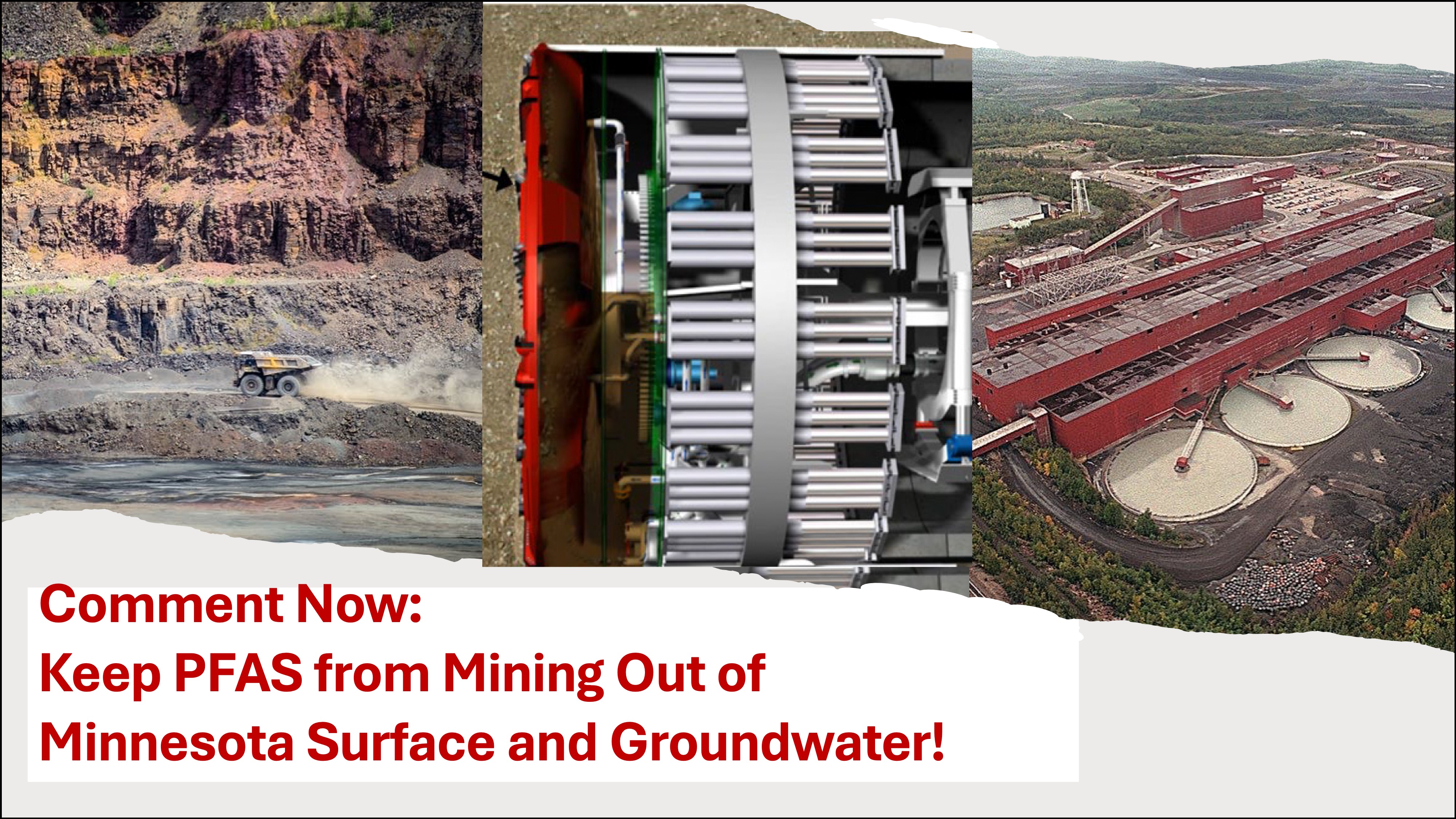Your comments are needed on the Minnesota Pollution Control Agency (MPCA) “PFAS in Products Currently Unavoidable Use” rules.

MPCA Comment Deadline: March 1, 2024, at 4:30 pm
You can help ensure that prohibitions and disclosure rules for dangerous PFAS “forever chemicals” address products used in mining and keep PFAS out of Minnesota wetlands, streams, and groundwater.
If you have not previously signed up to make comments before on the Office of Administrative Hearings (OAH) website page, there are a few steps you will have to go through to make your comments on MPCA rules for PFAS. Unfortunately, WaterLegacy has no way to simplify this process for you. Thank you so much for your effort and participation!
- Please click the sign up box in the top right corner of the page. You have to click the box, not just enter your address.
- Then fill in all the blanks on the sign up page and check off the pictures to show you are not a robot.
- The OAH page will then send you a verification email.
- When you click on the verification link, Discussions are listed on the right side of that page. Click on “39667 Minnesota Pollution Control Agency Requests of Comments on PFAS in Products Currently Unavoidable Use Rule.”
- When you get to the 39667 MPCA Comment page, there is one more step. Scroll to the bottom of the page and click on “view topic.”
Why Comment on PFAS Rulemaking?
Last year, the Minnesota Legislature passed a statute (Minn. Stat. § 116.943) that would prohibit PFAS in many types of products unless their use in those products was “currently unavoidable.” This was an important positive step to keep PFAS out of surface water and groundwater.
Now the MPCA is developing rules that will determine how the PFAS statute will be interpreted. The details will determine if Minnesota waters and human health are protected.
PFAS “forever chemicals” have a wide range of serious health consequences including cancers, liver damage, increased cholesterol and obesity, reduced immune response to fight infection, dangerous high blood pressure in pregnancy, reduced infant birth weight, and developmental delays in children.
The MPCA will receive many comments from industries seeking less transparency and more exclusions to allow continued use of PFAS. Your comments will push back on the pressure from special interests.
Talking Points
Please feel free to copy, edit, or use any part of these Talking Points or the PFAS in Mining background section below. We suggest that your comments to MPCA (by March 1, 2024), make the following points:
- Emphasize that MPCA must ensure that the “unavoidable use” rulemaking process protects Minnesota waters and the health of Minnesota citizens. MPCA must resist the pressure of special interests to find loopholes in the statute or escape transparency.
- MPCA rules must protect Minnesota surface waters and groundwater from the many ways in which mining processes have the potential to release PFAS by using products that contain PFAS for drilling, tunnel boring, flotation processing, fugitive dust control, and fire suppression among other uses.
- MPCA rules must make sure that any determination of “currently unavoidable use” must be proved by the manufacturer and must sunset after a specific time so that temporary exceptions don’t become permanent loopholes.
- MPCA rules must prioritize public health and transparency, so that information on use of PFAS in products is readily available and usable for members of the public. If manufacturers want to protect their trade secret formulas for products, they should use safer alternatives to PFAS.
- MPCA should work with the Minnesota Department of Health and the Minnesota Department of Natural Resources to prevent new mining facilities that release PFAS and to investigate whether PFAS are present at existing and legacy mining sites.
Please submit your comments to MPCA on the “PFAS in Products Currently Unavoidable Use Rule” by 4:30 pm on March 1, 2024.
You can write comments in the space provided or upload a separate letter or other documents. Please let us know at info@waterlegacy.org if you have problems using MPCA’s comment site.
PFAS in Mining
Mining is a potential source of PFAS release both to surface water and to groundwater.
- Exploratory drilling for minerals, use of tunnel boring machines, use of surfactants to enhance metal recovery in the ore floatation process, ore leaching, acid mist suppression, and use of wetting agents are just some of the ways in which the mining industry can introduce PFAS to surface water and groundwater. Products containing PFAS may also be used in mines for fire suppression and firefighting activities.
- Ore flotation processes—like the processing method proposed by PolyMet for the NorthMet mine—may use aqueous foams containing PFAS to lower surface tension and separate the metals from soil and rock. PFAS in the flotation process can be released to the environment through tailings seepage to surface and groundwater and in direct wastewater discharge to surface water.
- Tunnel boring machines, like the one proposed by Talon Metals for the Tamarack mine may directly introduce PFAS to groundwater through use of lubricants, protection pastes, greases, foaming agents for rock tunnel boring, grouting additives, or fire resistant fluids containing PFAS.
- Although there have been few efforts to monitor mines as potential sources of PFAS to, BHP’s Mount Whaleback Iron Ore Mine in Western Australia was recently identified as the source of PFAS impacts to groundwater with the potential to threaten a nearby drinking water supply.
